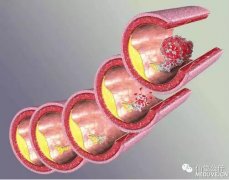
2015年12月28日 讯 /生物谷BIOON/ --最近,来自哈佛大学的一个研究团队通过研究描述了一种临床前的方法或可帮助治疗2型糖尿病、脂肪肝及其它代谢性疾病,文章中研究者开发了一种抗体,其可以改善通过靶向作用脂肪组织中名为aP2(FABP4)的激素来帮助改善机体的葡萄糖调节,并且降低肥胖小鼠集体的脂肪肝症状。
相关研究发表在Science Translational Medicine上。研究者Gakhan S. Hotamisligil说道,该项的重要性有两点,第一,其阐明了aP2作为异常的葡萄糖代谢的关键激素,其次阐明了aP2可以高效靶向作用并且治疗糖尿病及潜在的免疫代谢性疾病。
以脂肪组织为特性的肥胖症的增加和个体患代谢性疾病的风险增加直接相关,比如2型糖尿病及心血管疾病等;近来有研究表明机体组织在代谢性疾病的发生过程中会扮演重要的作用,其中部分就是通过释放特殊激素来在机体远端位点发挥作用,比如肝脏、肌肉、大脑等影响系统性代谢的部位。
此前研究人员就发现蛋白质aP2可以作为一种脂肪组织和肝脏之间的关键激素介导交流工具,而aP2的水平在肥胖、糖尿病及动脉粥样硬化患者机体中的水平会明显上升,而且降低aP2的突变会导致个体肥胖、血脂异常及心脏疾病的风险明显下降,而修饰aP2功能的策略或许会帮助开发治疗慢性疾病的新型疗法。
这项最新研究中,研究人员开发了一种新型的可以靶向作用aP2的单克隆抗体,而且研究者还发现其中一种抗体可以有效改善两个独立肥胖模型机体的葡萄糖调节功能,此外也会对脂肪肝带来明显的有益效应。因此这种新型的单克隆抗体的制造对于后期开发新型抵御肥胖相关的代谢性障碍的新型疗法或将带来一定希望。(生物谷Bioon.com)
本文系生物谷原创编译整理,欢迎转载!转载请注明来源并附原文链接。更多资讯请下载生物谷APP.

doi:10.1126/scitranslmed.aac6336
PMC:
PMID:
Development of a therapeutic monoclonal antibody that targets secreted fatty acid–binding protein aP2 to treat type 2 diabetes
M. Furkan Burak1,*, Karen E. Inouye1, Ariel White1, Alexandra Lee1, Gurol Tuncman1, Ediz S. Calay1, Motohiro Sekiya1, Amir Tirosh1, Kosei Eguchi1, Gabriel Birrane2, Daniel Lightwood3, Louise Howells3, Geofrey Odede3, Hanna Hailu3, Shauna West3, Rachel Garlish3, Helen Neale3, Carl Doyle3, Adrian Moore3 and Gökhan S. Hotamisligil1,4,†
The lipid chaperone aP2/FABP4 has been implicated in the pathology of many immunometabolic diseases, including diabetes in humans, but aP2 has not yet been targeted for therapeutic applications. aP2 is not only an intracellular protein but also an active adipokine that contributes to hyperglycemia by promoting hepatic gluconeogenesis and interfering with peripheral insulin action. Serum aP2 levels are markedly elevated in mouse and human obesity and strongly correlate with metabolic complications. These observations raise the possibility of a new strategy to treat metabolic disease by targeting serum aP2 with a monoclonal antibody (mAb) to aP2. We evaluated mAbs to aP2 and identified one, CA33, that lowered fasting blood glucose, improved systemic glucose metabolism, increased systemic insulin sensitivity, and reduced fat mass and liver steatosis in obese mouse models. We examined the structure of the aP2-CA33 complex and resolved the target epitope by crystallographic studies in comparison to another mAb that lacked efficacy in vivo. In hyperinsulinemic-euglycemic clamp studies, we found that the antidiabetic effect of CA33 was predominantly linked to the regulation of hepatic glucose output and peripheral glucose utilization. The antibody had no effect in aP2-deficient mice, demonstrating its target specificity. We conclude that an aP2 mAb–mediated therapeutic constitutes a feasible approach for the treatment of diabetes.



